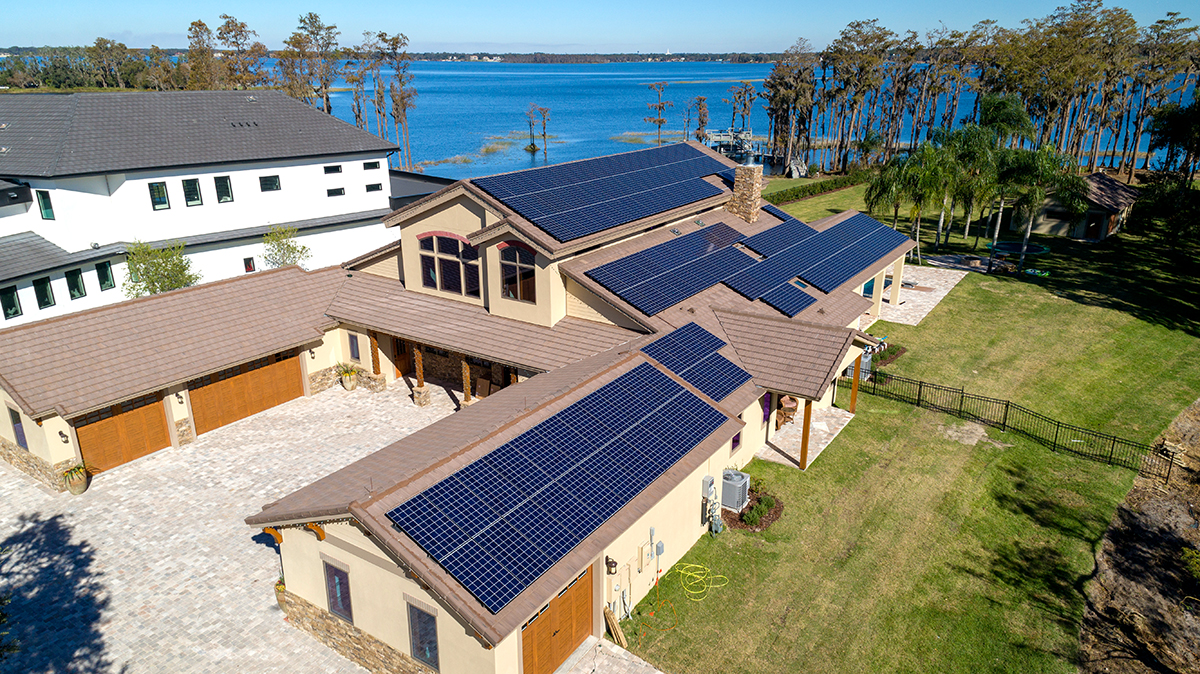How to Calculate Solar Power Needs for Your Home
Considering a solar energy system for your home? One of the first questions you’re probably asking is, “How many solar panels (often called “solar modules”), do I need on my roof?” To accurately calculate solar power needs with your installer and get the most out of your future system, you’ll need to provide them with accurate information about your energy usage.
Here are some tips to consider when calculating your solar power needs.

Determining your local solar subsidies is the first step to calculate your solar power needs.
Calculate Solar Power Needs, Step 1: How much energy do you consume?
The main consideration in deciding the size of your PV system is your own energy consumption. How much energy is used in your home on a typical day? Here are a few factors to take into consideration:
- Number of people living at home
- Heating and cooling devices
- Appliances
- Water heater
- Lighting
- Electric vehicles

Make sure to save a few recent electricity bills to show your potential installer so they can determine your consumption pattern, usually shown in kilowatt hours (kWh). Don’t forget that electricity usage might be higher in some months (i.e., if you use extra lights and heating during the winter).
A great way to understand and calculate your solar power needs is to add an energy meter to your home. This will enable you to track your energy consumption habits even before you install a PV system, and thereby determine how large your PV system needs to be to offset your energy usage.

Step 2: Determine your local solar schemes and subsidies
You may also want to check out the types of solar schemes and subsidies that are available in your region. Different countries offer different types of incentive structures. Until a few years ago, the UK had a Feed in Tariff (FiT) that offered payments to households that produced their own electricity using renewable technologies, such as solar PV. Unfortunately the UK FiT scheme is no longer available for new solar PV installations and has been replaced by the smart export guarantee (SEG). It pays households for solar energy that is generated, but not used – and instead is fed back to the grid, but isn't as generous as the previous FiT scheme.
Step 3: Designing your solar PV system
Once your installer calculates your solar power needs, they will consider the following factors:
- Your geographic location
- Sunlight exposure
- Roof size and direction if the system is being installed on your rooftop) or garden size for a ground-mounted system. For example, if you live in a location with lower sunlight exposure, a larger system might be needed to generate the same amount of power as a location with higher irradiance.
Since PV production does not exactly match energy usage, as solar energy is produced during the day and energy is typically consumed when families are at home in the morning and evening, you might opt to store your PV energy in a battery.
The type of PV system you plan to install is another important consideration when calculating how much solar power you need. For example, a solar inverter developed with module-level power electronics (MLPE) will enable each module to produce at its maximum individual output without being affected by other modules. This will also allow you to place more modules on the roof because they can be placed in different angles, directions and layouts, so that you can generate more energy for your own self-consumption or to feed into the grid.
For a comparison of the different types of PV inverter technologies, watch this video:
When your installer calculates your system size and type, they can take into account both solar PV production and storage. Having an inverter with DC coupling (as opposed to AC coupling) allows you to store excess energy above the inverter rating. So, with oversizing, you could install a 5 kWp inverter, but have up to 7.75 kWp of solar modules, and then also add a 5 kWp battery. This would bring your actual total PV capacity to actually 12.75 kWp.
PV System Design Tools
At SolarEdge, we’ve developed a web-based Designer tool for our installers to plan, build, and validate PV systems, taking all of the above-mentioned parameters (and more) into consideration. Location, climate, and other factors are used to design a 3D simulation of the roof that assists in creating a PV layout, complete with electrical design, production simulation, and everything needed to help future PV system owners understand and envision a solar-powered home.
Using Designer, your installer will be able to use your annual consumption figure (from your electricity bills) and your energy consumption profile to give you figures for how much of the electricity generated by your PV system they would expect you to use and export back to the grid and estimate how much you would import from the grid.
Thinking of Including Battery Storage?
When your installer calculates your system size and type, they can take into account both solar PV production and storage. Having an inverter with DC coupling (as opposed to AC coupling) allows you to store excess energy from your PV system. If you are wondering if this is right for you, your PV installer can also simulate this for you in Designer.
To learn more about how much solar energy you need for your home, contact your local SolarEdge-certified installer.






Add new comment
Comments